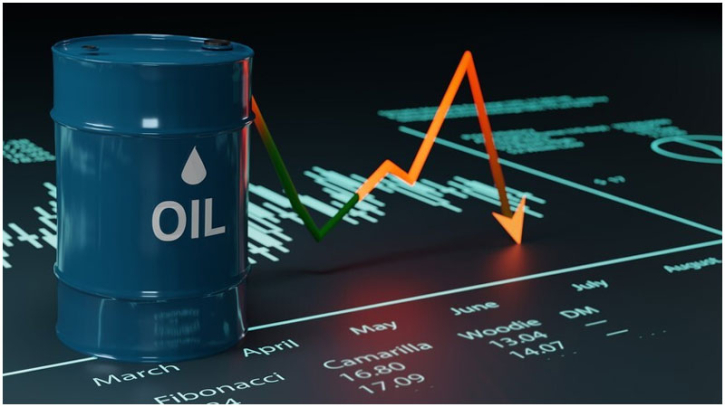Oil sinks 4% as US kicks off 104% tariffs on China

Oil prices dropped to their lowest in more than four years on looming demand concerns fuelled by an escalating tariff war between the United States and China, the world's two biggest economies, and a rising supply outlook.
Brent futures lost $2.38, or 3.79%, to $60.44 a barrel as of 0423 GMT. U.S. West Texas Intermediate (WTI) crude futures fell $2.46, or 4.13%, to $57.12. Both contracts touched their lowest level since February 2021.
The six-month spread for Brent slumped to 79 cents, its lowest level since mid-November, as the market was seen moving into a potential surplus. The spread has collapsed 86% from a high of $5.69 on January 15 that reflected tightening supply and expectations of a revival in Chinese demand.
Both Brent and WTI have tumbled over the five consecutive sessions since U.S. President Donald Trump announced sweeping tariffs on most imports sparking concerns a global trade war would dent economic growth and hit fuel demand.
Trump's 104% tariffs on China kicked in from 12:01 a.m. EDT (0401 GMT) on Wednesday, adding 50% more to tariffs after Beijing failed to lift its retaliatory tariffs on U.S. goods by a noon deadline on Tuesday set by Trump.
Beijing vowed not to bow to what it called U.S. blackmail after Trump threatened the additional 50% tariff on Chinese goods if the country did not lift its 34% retaliatory levy.
"China’s aggressive retaliation diminishes the chances of a quick deal between the world’s two biggest economies, triggering mounting fears of economic recession across the globe," said Ye Lin, vice president of oil commodity markets at Rystad Energy.
"China’s 50,000 bpd to 100,000 bpd of oil demand growth is at risk if the trade war continues for longer, however, a stronger stimulus to boost domestic consumption could mitigate the losses," she said.
Excerbating oil's decline was a decision last week by OPEC+, which groups together the Organization of the Petroleum Exporting Countries and allies including Russia, to hike output in May by 411,000 barrels per day, a move that analysts say is likely to push the market into surplus.
Goldman Sachs now forecasts that Brent and WTI could edge down to $62 and $58 per barrel by December 2025 and to $55 and $51 per barrel by December 2026.
As oil prices sank, Russia's ESPO Blend oil price fell below the $60 per barrel Western price cap level for the first time ever on Monday.
In one positive sign for demand, data from the American Petroleum Institute industry group showed U.S. crude inventories fell by 1.1 million barrels in the week ended April 4, compared with expectations in a Reuters poll for a build of about 1.4 million barrels.
Official inventory data from the Energy Information Administration is due on Wednesday at 10:30 a.m. EDT (1430 GMT).
.png)




